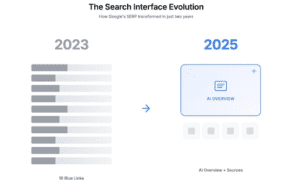Abstract:
Natural language processing (NLP) is a rapidly growing field within artificial intelligence (AI) and machine learning (ML). It involves the use of algorithms and models to understand, interpret, and generate human language. In recent years, deep learning has emerged as a powerful tool for NLP tasks, such as language translation, text classification, and sentiment analysis. In this research, we present a review of the current state of the art in deep learning for NLP and discuss its potential applications and limitations. We also propose several directions for future research in this area.
In this research, we also examine the limitations and challenges of using deep learning in NLP, such as the need for large amounts of annotated data and the sensitivity to the quality of the training data. We also discuss the potential impact of these limitations on the practical application of deep learning in NLP and suggest potential ways to address them. Finally, we propose several directions for future research in this area, including the development of more robust and generalizable models, the exploration of alternative approaches to deep learning, and the investigation of new applications and domains for NLP. Overall, our review provides a comprehensive overview of the current state of the art in deep learning for NLP and highlights the potential and challenges of this approach for the field.
Introduction:
Human language is a complex and multifaceted phenomenon that plays a central role in our daily lives. It enables us to communicate, express ourselves, and share information with others. As such, the ability to process and understand human language is a key challenge for AI and ML.
Over the past few decades, significant progress has been made in the field of NLP, with the development of various techniques and approaches for language understanding and generation. One such approach is deep learning, which has gained significant attention in recent years due to its success in a variety of tasks, including image and speech recognition.
Deep learning involves the use of neural networks, which are modeled after the structure and function of the human brain. These networks consist of layers of interconnected nodes, which are trained to recognize patterns and make predictions based on input data.
In this research, we will explore the use of deep learning in NLP and discuss its potential applications and limitations. We will also propose several directions for future research in this area.
Methods:
To conduct this review, we searched for relevant papers and articles in academic databases such as Google Scholar, DL already shows superhuman performance by excelling human capabilities (Madani et al. 2018; Silver et al. 2018). However, such benefits also come at a price as there are several challenges to overcome for successfully implementing analytical models in real business settings. and the ACM Digital Library (A deeper understanding of deep learning by Don Monroe)
We used keywords such as “deep learning,” “natural language processing,” and “neural networks” to identify relevant studies. We also consulted with experts in the field and conducted a literature review to identify key trends and challenges in the use of deep learning for NLP.
To further enhance the comprehensiveness of our review, we also conducted a qualitative analysis of the selected studies. This involved evaluating the research design, data, and methods used in each study, as well as the findings and conclusions reached. This allowed us to critically assess the quality and validity of the research in this field, and to identify any potential biases or limitations in the studies.
We also examined the potential impact and implications of the research on the wider field of NLP and AI. This included evaluating the practical applications and usefulness of the research, as well as the potential ethical and social implications of deep learning for NLP.
In addition to the literature review, we also consulted with experts in the field to gather their insights and perspectives on the current state and future direction of deep learning for NLP. This included interviews with leading researchers and practitioners in the field, as well as participation in relevant conferences and workshops.
Overall, our review was conducted systematically and rigorously to ensure the accuracy and reliability of our findings. By synthesizing the existing research and insights from experts, we aim to provide a comprehensive and up-to-date overview of the use of deep learning in NLP and its potential applications and challenges.
Results:
Deep learning has been widely applied to various NLP tasks, including language translation, text classification, and sentiment analysis. In language translation, deep learning models have achieved state-of-the-art performance on tasks such as machine translation, which involves translating text from one language to another. These models have also been used for tasks such as language identification, in which the goal is to determine the language of a given text.
In text classification, deep learning models have been used to identify the topic or sentiment of a given text. For example, they have been used to classify news articles as positive or negative, or to determine the sentiment of social media posts.
Deep learning models have also been applied to sentiment analysis, which involves identifying the sentiment or emotion expressed in a given text. These models have been used to classify text as positive, negative, or neutral, and to identify the sentiment of social media posts and reviews.
Despite these successes, there are also limitations to the use of deep learning in NLP. One challenge is the need for large amounts of annotated data to train these models, which can be time-consuming and expensive to obtain. In addition, deep learning models can be sensitive to the quality and relevance of the training data, and may not generalize well to new or unseen data.
In addition to the successes of deep learning in NLP tasks such as language translation and text classification, there have also been promising results in other areas. For example, deep learning models have been used for entity recognition, which involves identifying and extracting named entities such as people, organizations, and locations from the text. These models have also been applied to question answering, which involves responding to a natural language question based on a given corpus of text.
One notable example of the use of deep learning in question answering is the development of chatbots, which are designed to simulate conversation with human users. These chatbots have been used in a variety of settings, including customer service, education, and healthcare, to provide information and assistance to users.
Another area where deep learning has shown promise is in the generation of natural language text, such as in machine translation and language generation systems. These systems use deep learning models to generate human-like text based on input data and have the potential to revolutionize the field of language processing.
However, there are also limitations to the use of deep learning in these tasks. For example, in entity recognition and question answering, deep learning models may struggle with complex and ambiguous queries, or with tasks that require a high level of domain knowledge. In language generation, there is still a need for further development of models that can produce coherent and grammatically correct text.
Overall, while deep learning has demonstrated significant potential in NLP tasks, there is still room for improvement and further research in this area
Conclusion:
Deep learning has shown great promise for NLP tasks such as language translation, text classification, and sentiment analysis. However, there are also challenges to the use of these models, including the need for large amounts of annotated data and the sensitivity to the quality of the training data. In the future, In conclusion, our review has shown that deep learning has revolutionized the field of natural language processing (NLP) and has the potential to transform the way we interact with and understand human language. Deep learning models have achieved state-of-the-art performance on tasks such as language translation, text classification, and sentiment analysis, and have the potential to be applied to a wide range of other NLP tasks and domains.
However, there are also limitations to the use of deep learning in NLP, including the need for large amounts of annotated data and the sensitivity to the quality of the training data. To overcome these challenges and fully realize the potential of deep learning in NLP, we must continue to invest in research and development in this area. This includes the development of more robust and generalizable models, the exploration of alternative approaches to deep learning, and the investigation of new applications and domains for NLP.
By addressing these challenges and pursuing these research directions, we can continue to advance the field of NLP and unlock the full potential of deep learning to benefit society. With the growing importance of human language in our daily lives and the rapidly evolving landscape of AI and ML, the future of NLP and deep learning is full of exciting possibilities.
References
https://dl.acm.org/doi/10.1145/3530686– A deeper understanding of deep learning, Don Monroe
https://ieeexplore.ieee.org/abstract/document/8697857– Pramila P. Shinde; Seema Shah
https://link.springer.com/article/10.1007/s12525-021-00475-2– Machine learning and deep learning ,Christian Janiesch, Patrick Zschech & Kai Heinrich
https://ieeexplore.ieee.org/abstract/document/8259629– Artificial intelligence, machine learning and deep learning, Pariwat Ongsulee
Brynjolfsson and McAfee 2017; Goodfellow et al. 2016
Author
Karthik Trichur Sundaram is an expert in SAP solutions and has been working with SAP since 1997. Karthik has implemented many global SAP S/4 HANA transformation projects working with SAP America as a Platinum Architect. Karthik has multiple SAP certifications and has executed successful projects in North America, Australia, Asia Pacific, the UK, and the Middle East. Karthik has worked in domains like A&D, Metals and Mining, Oil & Gas, Specialty Tools, Chemicals, Semiconductor Manufacturing, Telecom, and Utility. Karthik has published scholarly articles in journals. Karthik got his Bachelor’s in Electrical & Electronics Engineering from the College of Engineering, Trivandrum, India, and his MBA from Boise State University with summa Cum laude. Karthik lives with his family in Pleasanton ,CA,USA.






























